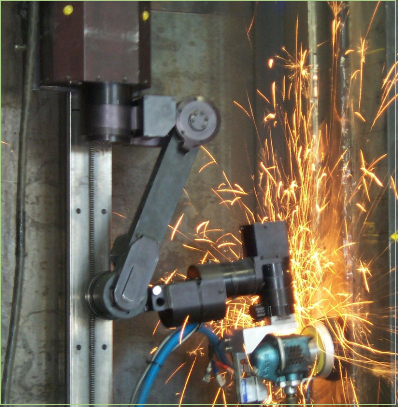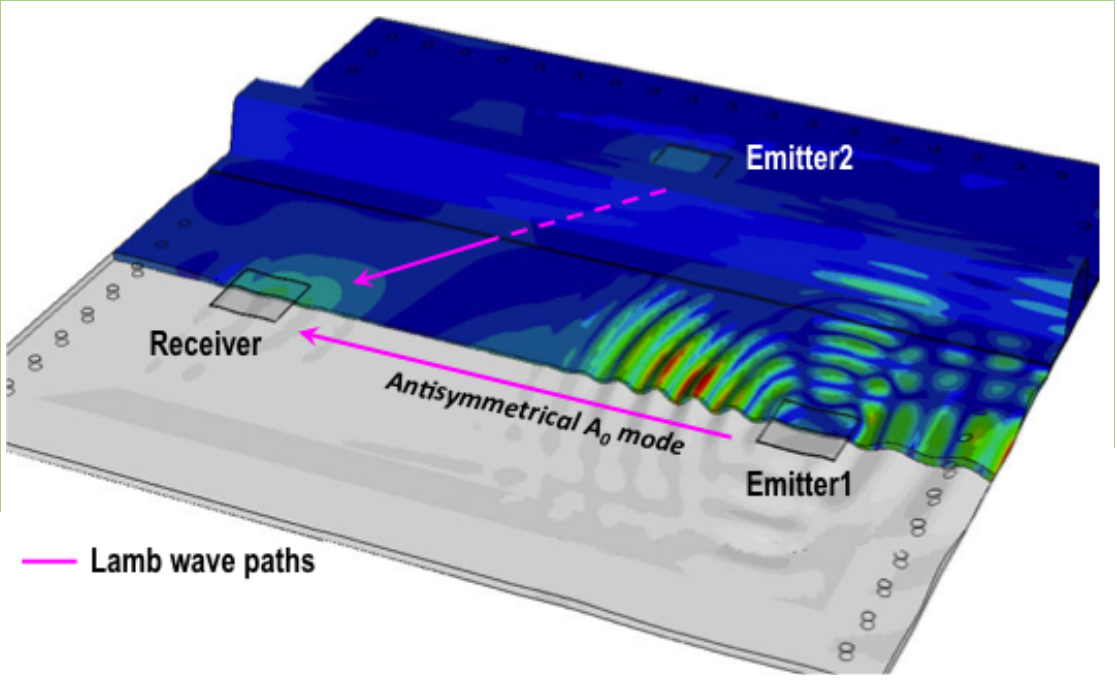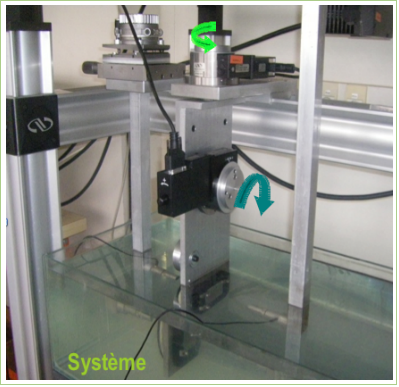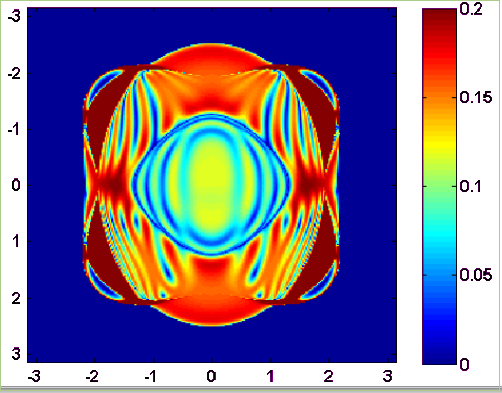Surveillance - Diagnostic - CND
This axis of research is dedicated to the development of methods based on acoustic and vibratory analysis for the monitoring and diagnosis of rotating machines (condition monitoring) and for the detection, the localisation and the characterisation of defects. In addition, the characterisation of materials and the structure monitoring is addressed by ultrasonic waves.
Examples of studies:
Structural Health Monitoring (SHM) on a composite panel with detection of any damage (detection), localisation of the problem (identification) and quantification of the damage (diagnosis), estimation of the Asset Base Service Life Remaining (prognosis) and eventually the definition of a strategy to possibly keep or self-heal the defect.

Monitoring of machinizing from the observation of the instantaneous spindle speed and the detection of the gear failure
Identification of the elasticity modules and attenuation through anisotrop ultrasound signals measured on surfaces

Monitoring of automated grinding to avoid impact grindings because of the robot flexibility


Classification of the detected defects as for an object on real/false alarm from the fusion of information

Cyclostationnarity and separation of sources applied to a diesel engine. The radiated global noise is consisting of combustion noise, spay pattern noise and mechanical noise

The acoustic microscopy is a medical imaging and characterisation method using frequency mechanical waves being sufficiently high (with a few more MHz consisting of several GHz) to reach resolutions that can be compared to the ones of optical microscopes. The applications are numerous within research and industry to detect defects in some multi layer materials, are optically opaque, with resolutions from 1 µm to 1 mm.




